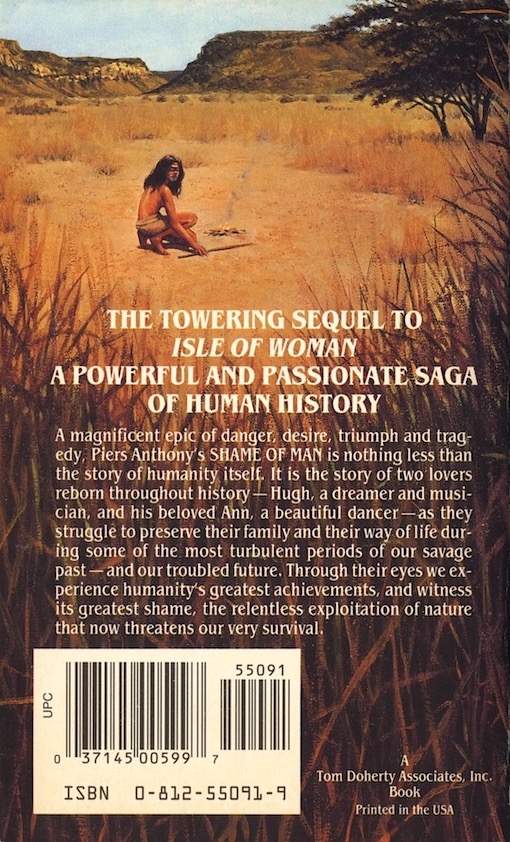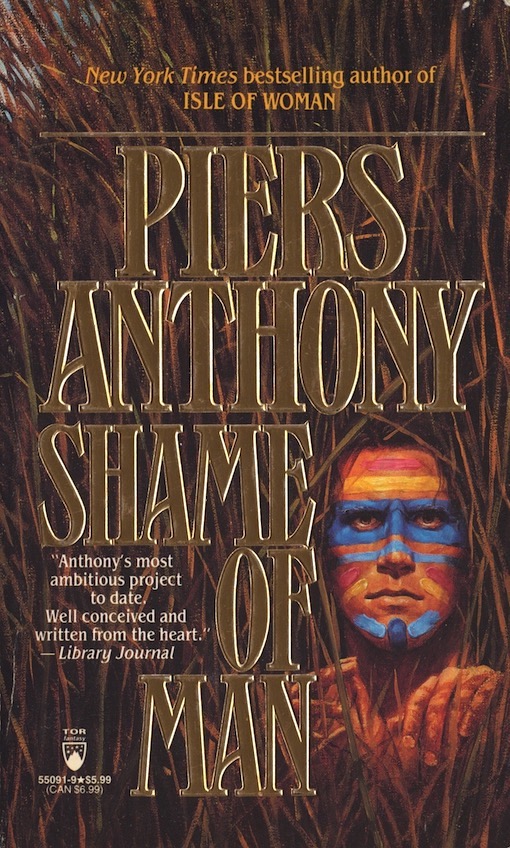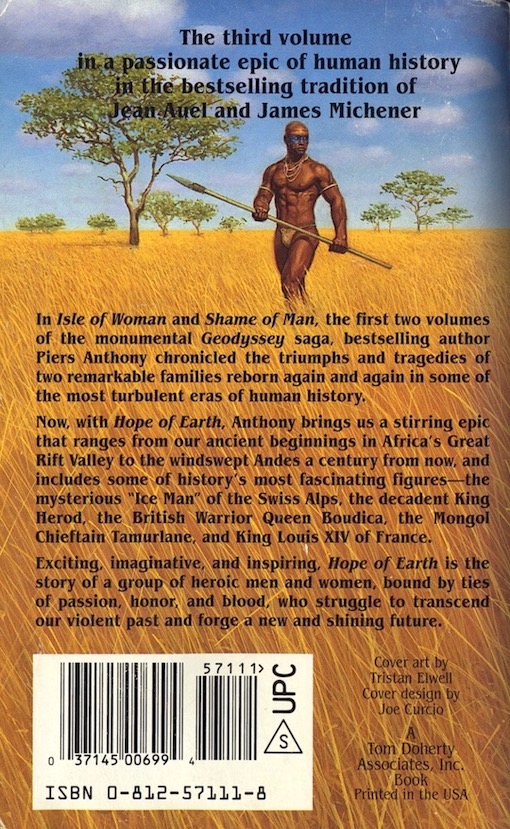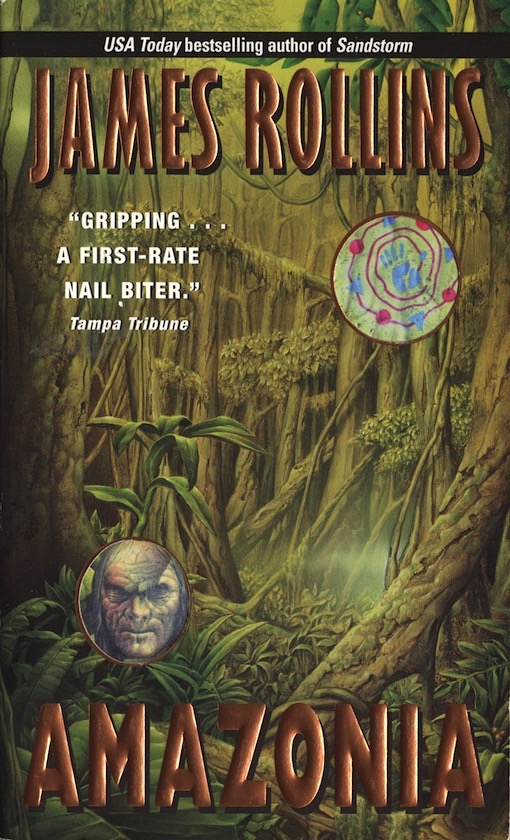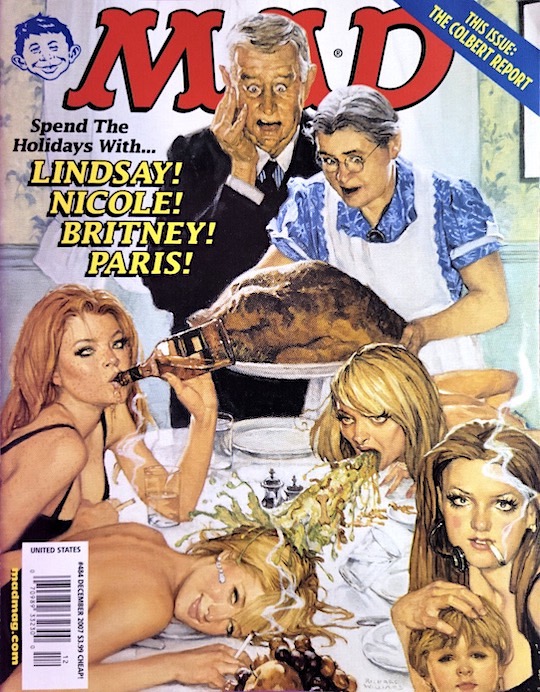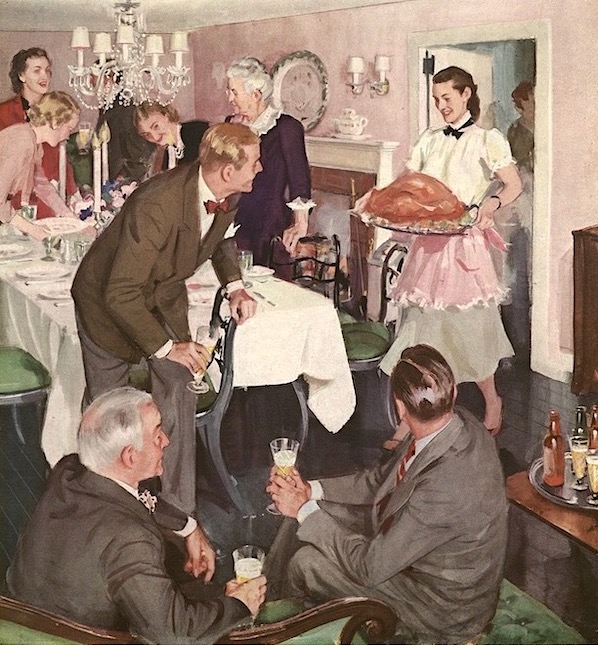I read several of Piers Anthony's novels when they were first published. He had a strong imagination and equally strong storytelling abilities that impressed me quite a bit. But then I stopped reading him, just like that, cold turkey. Looking back my reasons may have been as simple as not liking his latest book. But it could also have been just not liking his growing tendency to write about underage sexuality, which almost always made me cringe, even back when I was an underage teen. Anthony eventually got dogged for it too. I've even heard the term "dirty old man" used when describing him as an author. But for the most part, his ardent fans take it all in stride, believing fiction writers have a right to their own artistic expression. On some level I can agree with that, but only if delicate subjects like underage sexuality are presented in their proper context.
But heck, I'm no prude, I've certainly read my fair share of "adult" artistic expressioning, by authors as diverse as Gwen Davis, Philip Jose Farmer, Burt Hirschfeld, Gary Jennings, Herbert Kastle, Stephen Lewis, Henry Miller, Andrew J. Offutt and Karl Edward Wagner, among others. In fact I've read countless numbers of novels and stories that were published in the last quarter of the 20th century that contained what many would consider to be risque content. I've also read dozens of men's action-adventure and western series novels, which are littered with hot sex scenes. But they rarely made me cringe like some of the scenes in Anthony's books have (I did laugh quite a bit though). In particular, Anthony's Xanth series and his horror novel Firefly have been criticized for their cringe-worthiness, and deservingly so.
And since I've brought up Xanth, after 47 volumes, one would assume that that fantasy series is Anthony's pride and joy, his magnum opus. But I believe he may hold his most recently written series, The Geodyssey, in even higher regard. It totals five volumes, which are all featured below. In it Anthony has attempted to frame, in ecological terms, no less than the entire history of the human species, using a series of linked stories, or vignettes, as its vehicle. In terms of sheer ambition it's certainly a cry above Xanth, its multitude of volumes notwithstanding. Having just read the first Geodyssey book I can certainly attest to its ambitiousness. The story begins in the days of prehistoric man/women, and then moves into the discovery of America, the development of agriculture in the Fertile Crescent, war in Mesopotamia, contending Hittite and Egyptian empires, Etruscans and Romans, control of the Silk Road in the first century, the T'ang dynasty in China, Lithuania in the 13th-century, 17th-century Congo and 19th-century India and Britain, and last but not least, cannibalistic survival in a futuristic 21st-century America devastated by climate change. And since you are wondering, yes, there are plenty of sex scenes to go with each vignette.
Professional cover artists generally don't have the luxury of declining a commission based on whether or not they find a book's content or its author to not be to their liking. They have bills to pay like all of us. The three artists who produced the covers of the first four volumes of the Geodyssey series probably didn't let any thoughts they may have had either way about Anthony get in the way of their professionalism; they did what they were contracted to do, deliver to their client, Tor Books, a highly accomplished set of painted illustrations representing Anthony's novels. In my opinion, they went above and beyond what was expected. Their fantastic covers have even inspired me to assemble a potpourri of similarly looking book covers for this post. I could've added dozens more too, all linked by prehistoric-man/women or primitive-man/women themes, but I think I'll save those for another time.
 |
| CLICK TO ENLARGE |
'A magnificent saga of passion, heroism, and survival. Piers Anthony's ISLE OF WOMAN is a tale like no other ever written. It is nothing less than the story of humanity itself, from its savage origins to its troubled future, told through the lives of one family reborn throughout history. At once grand in scope and intimate in human detail, ISLE OF WOMAN tells the story of a man and a woman born at the dawn of human history, separated by fate, yet united by an unquenchable passion that even time could not conquer: Blaze, the fireworker who raised his kind out of savagery, and Ember, the beautiful green-eyed woman who forever haunted his dreams. ISLE OF WOMAN is a powerful and prophetic masterwork from one of the bestselling storytellers of our time.'
'The towering sequel to ISLE OF WOMAN, a powerful and passionate saga of human history. A magnificent epic of danger, desire, triumph and tragedy. Piers Anthony's SHAME OF MAN is nothing less than the story of humanity itself. It is the story of two lovers reborn throughout history--Hugh, a dreamer and musician, and his beloved Ann, a beautiful dancer--as they struggle to preserve their family and their way of life during some of the most turbulent periods of our savage past--and our troubled future. Through their eyes we experience humanity's greatest achievements, and witness its greatest shame, the relentless exploitation of nature that now threatens our very survival.'
'The third volume in a passionate epic of human history in the bestselling tradition of Jean Auel and James Michener. In ISLE OF WOMAN and SHAME OF MAN, the first two volumes of the monumental Geodyssey saga, bestselling author Piers Anthony chronicled the triumphs and tragedies of two remarkable families reborn again and again in some of the most turbulent eras of human history Now, with HOPE OF EARTH, Anthony brings us a stirring epic that ranges from our ancient beginnings in Africa's Great Rift Valley to the windswept Andes a century from now, and includes some of history's most fascinating figures--the mysterious "Ice Man" of the Swiss Alps, the decadent King Herod, the British Warrior Queen Boudica, the Mongol Chieftain Tamurlane, and King Louis XIV of France. Exciting, imaginative, and inspiring, HOPE OF EARTH is the story of a group of heroic men and women, bound by ties of passion, honor, and blood, who struggle to transcend our violent past and forge a new and shining future.'
Tristan Elwell also produced the cover art of Geodyssey 4, Muse of Art, and what a beauty it is. Wow! Tor published this paperback edition in December, 2000.
'A towering testament of ambition and desire, hope and despair, Piers Anthony's epic Geodyssey saga is nothing less than the story of humanity itself, as seen through the eyes of a handful of courageous, passionate men and women reborn again and again in some of the most turbulent ages of history. MUSE OF ART is the newest chapter in this astonishing chronicle, probing the heart of our deepest fears and highest aspirations, illuminating the spark that makes us what we are. It is the arts that truly define humanity and set us apart from all other species on earth. In a rousing passionate story that ranges from the mists of prehistory to a terrifyingly plausible near future, MUSE OF ART explores the special talents that have inspired and motivated us since the earliest days of our existence: curiosity and creativity, seduction and survival, destruction and healing.'
'This new novel in Anthony's "Geodyssey" series follows a pair of lovers from the earliest proto-humans on the savannahs of Africa to the near future, as they are reincarnated through time and space. A remarkable epic of passion and courage, savagery and survival, Piers Anthony's "Geodyssey" is a saga unlike any ever written. It is nothing less than the story of humanity itself, told through the lives of a handful of extraordinary men and women reborn throughout history. Now, with CLIMATE OF CHANGE, Anthony introduces us to a new cast of characters, including Keeper, who knows the ways of nature, Rebel, a headstrong girl as brave as any man, Craft, a cunning inventor, and Crenelle, who uses her seductive charms to defend her people. Through their eyes, we see how some of the most crucial moments in human history have been driven by natural forces, from the great ice ages of prehistory to the droughts and plagues that have destroyed history's proudest civilizations. And we witness a harsh but hopeful future in which humanity at last transcends the devastating effects of climate change.'
'In a remote region of Kenya, American anthropologist Ken Lauder is about to make a discovery that will challenge everything we've ever believed about the missing link and the ascent of humankind: a boy who should not exist... a race that defies all logic... inhabiting a secret world that cannot be... A world Ken Lauder may never escape... alive.'
As I post this article I'm in the midst of reading Amazonia, and while I'm firmly caught up in it I find it tends to run in cliches inherent to its genre. However, it should be noted that this is just the author's second published book, and while it is an improvement over the first in terms of character development, it is not as improved as his succeeding novels will be. Rollins, in a very short time, has managed to become one of the best thriller writers in the business, with each book thoroughly researched and fueled by well drawn characters. Rollins reminds me a little of Michael Crichton, only he may in fact be the better writer. Rollins has also published some well-regarded fantasy novels under the pseudonym James Clemens.
'When the director of the CIA is handed a report from a Brazilian morgue confirming the death of an agent who disappeared in the Amazon jungle four years before, it doesn't take him long to realize he's got a big problem. In one top-secret folder he holds a pre-expedition photograph of the agent, waving the one arm he has left after a sniper's bullet claimed the other. In a second classified folder the director holds the morgue picture--a photograph showing both arms resting on the agent's sides. What happened down there? It's up to a specially selected scientific and military team to find out--no matter what, or who, it takes.'
'The Rand scientific expedition entered the lush wilderness of the amazon and never returned. Years later, one of its members has stumbled out of the world's most inhospitable rainforest--a former Special Forces soldier, scarred, mutilated, terrified, and mere hours from death, who went in with one arm missing... and came out with both intact. Unable to comprehend this inexplicable event, the government sends Nathan Rand into this impenetrable secret world of undreamed of perils, to follow the trail of his vanished father... toward mysteries that must be solved at any cost. But the nightmare that is awaiting Nate and his team of scientists and seasoned U.S. Rangers dwarfs any danger they anticipated; an ancient unspoken terror--a power beyond human imagining--that can forever alter the world beyond the dark, lethal confines of AMAZONIA.'
'Joy, a foxy lady with a Trust Fund---Jack, a dedicated adventurer in flight from the American Dream--Tony, a quiet dreamer compelled to unravel the meaning of a vivid and devastating acid trip--Off on the biggest, boldest, wildest, and craziest scam of their lives: to fly to South America, score four kilos of pure cocaine, and turn it into enough untaxed dollars to buy their freedom from the system forever. So much for simple plans. Arriving in Lima, the trio discovers it could be weeks---and many miles--before they score. All the elements of a midnight-travel brochure await them as they trek across Peru, Bolivia, and Brazil--thieves, cops, triple-crossing drug dealers, expatriates of infinite variety, naive Latin temptresses and, for Tony, strange and powerful messages from an ancient tribe. HEAD HUNTERS: Dazzling, colorful, a high altitude tale of three American adventurers in South American, driven toward destinies they never could have predicted, winding up with much, much more than just cocaine.'
Leonard Everett Fisher produced the jacket art on the Macmillan edition. He was born in Brooklyn in 1924, and attended Brooklyn College, where he majored in art, paleontology and geology. After serving his country in WWII, he earned a BFA and an MFA from Yale University. He also studied at the Art Students League in NYC. He has since illustrated more than 250 books for young readers, including 88 that he wrote himself.
'Jack London, the celebrated American author of THE CALL OF THE WILD and WHITE FANG, is little known for his works of science-fiction, though they are among the best books of this kind that have been written. This is the ingenious story of the tree-dwellers, the cave-dwellers, and the fire-makers--three stages of human evolution going on side by side, warring and struggling in a remote geological age. It is also the personal tale of Big-Tooth, a child of the Tree People, who must learn to live among the terrors that surround early man and half-man. Deserted by his parents, Big-Tooth is adopted by the Cave People, with whom he grows to maturity. His is a world of fear and sudden death, to be faced with cunning and bravado, a world in which human enemies are as dangerous as wild animals. The youth finds himself caught between the savagery of Red-Eye, throwback to the animalistic stage, and a a yet more mysterious threat: the strange people to the North, whose approach is marked by a plume of smoke. Yet, within this struggle for existence, he is able to discover lasting friendship and love. Before Adam embodies in novel form London's research into the theories of evolution and atavism (reversion to a primitive type). The life of Big-Tooth is re-created by means of an unusual device: the primeval memories of a modern man, who reveals through his dreams the adventures of his prehistoric "self." As fresh and immediate today as it was when first published, London's tale of a forgotten age is now reissued for a new and younger generation. Willy Ley, who is best known for his writings on rockets, missiles, and space travel, has returned to a first interest in preparing the Biographical Introduction to this edition: a paleontologist by training, he has long been a London enthusiast, and welcomed the opportunity to review London's life and work. The distinguished anthropologist Loren Eiseley, University Professor of Anthropology and the History of Science at the University of Pennsylvania and author of the THE IMMENSE JOURNEY, comments in his epilogue upon the vitality and scientific basis of London's evolutionary vision, and the Pulitzer Prize-winning artist Leonard Everett Fisher has contributed full-page drawings of the outstanding characters and events in the story.'
'HE DIDN'T NEED A TIME MACHINE--PRIMEVAL MEMORY TOOK HIM BACK... Big-Tooth, a child of the Tree People, lived his adventure-filled life in a remote geological age---but it was the mind of a modern boy that recaptured those violent times when the earth was very young and its people struggled for existence. Jack London, the celebrated author of THE CALL OF THE WILD and many other classic adventure tales, is little known for his works of science fiction, although they are among the best ever written in this field. BEFORE ADAM is an exciting adventure novel based on the author's research into the theories of evolution and atavism. One of the greatest storytellers of them all writes of mankind's greatest struggle---survival of the fittest!'
 |
| CLICK TO ENLARGE |
''THE NAKED TRUTH ABOUT THE ANIMAL CALLED HUMAN. Man is a creature who can write poetry, raise giant cities, aim for the stars, build an atomic bomb--but he is also an animal, a relative of the apes--a naked ape, in fact...'
"Mirror, mirror on the wall, who's the sexiest primate of them all?" Don't look now, reader, but it's you. How and why you rate this ranking is but one of a series of discoveries awaiting you. For there are a great many things about yourself that you don't know---and a few perhaps you would rather not. So be prepared. For delicious wit. For dazzling knowledge. and for a number of shocks, as famed zoologist Desmond Morris takes all the wraps off---'
Robert Maguire was an influential cover artist throughout his career, from his humble beginnings at Trojan Publications in the early 1950s to his final glory days with Pocket, Signet and Silhouette in the 1990s. In all, he produced more than 1200 book covers.
'They walked naked and unashamed. They sated their lust in sexual orgies. They drank the blood of their enemies. This is the brutal and compelling story of primitive me and women who lusted and loved, hunted and killed with wild animal abandon and with no sense of sin or shame.'
 |
| CLICK ON IMAGE TO ENLARGE |
Poor Dr. Irving A. Greenfield. Not poor in the literal sense, but poor in the sense that he just didn't get the kind of respect he should have for having written more than 300 novels. I have a special fondness for grinders like Greenfield and I always cut them a great deal of slack no matter how they are regarded by the literary intelligentsia. Aton is actually a kick-ass novel, and one of Greenfield's best. But don't take my word for it, take the word of someone who reviews books in a decidedly more professional manner than I do, Tarbandu, at the PorPor Books Blog.
Raymond Johnson produced the cover art on Long Pig. Raymond Sven Johnson was a significant paperback and men's magazine illustrator throughout the 1940s, 50s, and early 60s for publishers like Avon, Ace, Dell, Popular, Monarch, Atlas, Fawcett and Vista. He had a rather distinctive style of painting, especially noticeable in the way he portrayed women. He also produced some notable science fiction covers, Jack Williamson's The Green Girl being one example. Johnson is also credited with illustrating the interiors of three Tom Swift Jr. Adventures in the late 1960s. He may have produced the cover art too.
'Shirley Conran's SAVAGES takes the reader into the lives of five women: upper-class corporate wives, surrounded by all the luxuries their husbands salaries and charge cards can buy; wives, mothers, neighbors, cordial rivals, whose husbands are in competition for the presidency of a Fortune 500 company... After a business conference in Australia, the top executives of the powerful Nexus Mining Company relax together on Paui, a tropical island west of New Guinea. Unfortunately, during their vacation, the political unrest that simmers on this only partially civilized island comes to a head. While the women are on a boat trip, the hotel is attacked by terrorists and the tourists are slaughtered. Catching sight, on their return, of the carnage, the women flee into the jungle to survive as best they can. Suddenly these five women, who have known one another for years in the slightly bitchy atmosphere of genteel suburban competition, are forced to rely themselves for everything--including life itself. They have only their wits, strength, courage, and each other, now that all civilization has been stripped away and the only prize is survival. They are their only hope!'
"What I wanted from my journey was something so far beyond my comprehension that I would have to step completely out of my skin to understand and become a part of my surroundings." With that objective in mid, Eric Hansen walked into the rain forest of Borneo in 1982, carrying only a bedsheet, a change of clothes, and a rattan basked filled with barter goods. For 1,500 miles he hiked under a canopy of leaves so thick he couldn't see the sky, until he reached his destination on the east coast of Borneo. There he confronted modern civilization and turned around to walk back across Borneo in the "season of fear." STRANGER IN THE FOREST is Hansen's gripping story of wild hunts in the jungle, meetings and friendships with tribesmen who live in longhouses decorated with the headhunting swords of their ancestors, and of an inner journey in a dangerous, alien environment."
 |
| CLICK ON IMAGE TO ENLARGE |
'The stories in this groundbreaking collection---including the Nebula Award-winning "Rachel in Love"--effortlessly cross the boundaries between the real and the imaginary, blending visionary storytelling with uncompromising realism. They reveal the extraordinary range, depth, and insight that imbue all of Pat Murphy's work, confirming her as one of the most gifted authors of short fiction writing today."
'Amid the ruins of a once great city, a girl and her beautiful long-lost twin brother are drawn to the seductive voice of a green-eyed boy whose name is Death. Together they must journey through a poisoned garden filled with children who kill and beasts that speak--all the while resisting the evil that compels them to join in a nightmare ritual of blood that will unleash the power of the ancients and signal the end of humanity.'
'Max Lakeman is head-over-heels in love with his wife, enchanted by his two children, happy with his job mowing lawns. Unshakably content. Or is he? One warm summer night, Max’s overactive imagination conjures up a beautiful woman, Mrs. Zeno, who steps out of the moonlit rhododendrons and into his life. Max is certain that Mrs. Zeno is imaginary until she manages to seduce him into a passionate affair, blurring the lines between fantasy and reality, between wanting and having. MAX LAKEMAN AND THE BEAUTIFUL STRANGER brings rich attention to the emotional life of an ordinary man with remarkable insight into the longings of the human heart.'
'Generations ago, humans fled to the cosmic anomaly known as GRASS. But before humanity arrived, another species had already claimed GRASS for its own. It too had developed a culture… Now a deadly plague is spreading across the stars, leaving no planet untouched, saved for GRASS. But the secret of the planet’s immunity hides a truth so shattering it could mean the end of life itself.'
Virginia Nielsen McCall (1909-2000), who I don't think is related to Jon Nielsen, was the author of at least 30 books. They seem to be a mix of romance, mystery and juvenile titles. She was born in Idaho Falls, Idaho, and educated at the University of Idaho and University of California extension classes. She began writing for greeting cards companies and short verse for religious publications in 1937. Then she branched out into self-help articles and then onto home-making and child care articles. She also wrote confession stories for women's magazines. Later, McCall was the editor of Columbia Press of Astoria. Over the years her publishers have included Ace, Fawcett, Harlequin, Avalon, David McKay Co., and Scholastic, among others.
Jon Nielsen (1912-1986) was an artist, illustrator and portraitist whose career spanned over 35 years. Born in 1912 to Danish parents, Nielsen graduated from Brooklyn's Pratt Institute and went on to become primarily a children's illustrator in New York, illustrating over 200 children's books as well as numerous adult titles and textbooks. A college art teacher and an avid traveler, Nielsen also accepted commissions to sketch portraits in Vietnam during the war for the U.S. State Department, and to go on safari in Zambia to make woodcuts of the native animals for the Zambian government. His work has been featured in galleries in New York and Florida. With his wife Kay he created the children's book The Wishing Pearl and Other Tales of Vietnam.
'At this time, Mary Tollar had been too young to understand or to question why Harry “Reverend” Axtell had rescued her from the life of an orphan, delivering her into the hands of Mrs. Abigail Fyfe, aged mistress of an old mansion called Fyfe House. And shortly afterward, the arrangement had been secured when Mrs. Fyfe married Harry Axtell. Through the years Mary had become used to the seclusion that Mrs. Fyfe--she refused to use her new husband's name--imposed upon herself, though it was always bitter to see how the old woman avoided both Mary and “Reverend.” And now “Reverend” was dead, that gentle, unassuming man who had been Mary's protector and whose privately printed newspaper of homespun philosophy and earned him the sobriquet “Reverend” in local circles. It was after “Reverend's” funeral--which Mrs. Fyfe did not attend---that Mary was summoned to the tower room where the old lady kept herself. There Mary was cruelly told to get out of the house that had been her home for years. It was insult added to injury when, from her great wealth, Mrs. Fyfe handed Mary fifty dollars with which to begin her own life. Both confused and angry, Mary left the next morning--only to be apprehended hours later by the police. Sometime during the night, old Mrs. Fyfe had been murdered. In short order Mary learned that she was the only suspect. Baffled now, and frightened, Mary could rely only on the forces of justice to save her--and on Juanita, Mrs. Fyfe's frightened housekeeper, and Don Earl, the vagabond artist Mary had met on her flight from Fyfe House.'
'Leslie Ford presents those popular characters, Colonel Primrose and Mrs. Latham, in another excellent story. It is the story of a black-sheep American whose family had lived in Hawaii for generations, but who went to Japan and came back to play traitor to his country. Mrs. Latham is present when he makes his first appearance in his family's house; she is present when his murdered body is discovered; and she is deeply involved in the circumstances that lead up to a second murder. HONOLULU MURDER STORY is well told with typical Leslie Ford skill, suspense, deft characterisation and colourful background.'
The Philadelphia Murder Story by Leslie Ford was published in paperback by Popular in 1965.
I was dead certain (no pun intended) that both of these covers were produced by William Teason, famous for producing scores of crime and horror novel covers for Dell, Berkley and Popular during the 1960s, 70s and 80s. But then I found definitive proof that Trial by Ambush was created by artist Joe Lombardero. So now I'm thinking that The Philadelphia Murder Story cover might be his too! It seems both men worked for Popular Library at about the same time, so any similarities between what the two artists composed could perhaps be attributed to whoever was their shared art director. But who knows, maybe I have the whole Teason thing all wrong, and now I need to re-evaluate every unsigned cover that I thought were his. Damn.
WEB OF EVIL: 'They were all trapped---this beautiful girl with her shadowed past... this handsome, haunted lawyer...this so-called "respectable" judge... this imperious woman whose life was a ghastly masquerade. One man was at the center, weaving his monstrous web. But his brutal, bizarre murder solved nothing. It was only the beginning of something even more terrifying...'
TRIAL BY AMBUSH: 'She accused him of a shocking offense... and now he waited somewhere in the dark for his revenge. Would it be murder--or worse? Two nights before here wedding, beautiful Baltimore debutante, Mary Melissa Seaton, is thrust into a nightmare of crime and horror. Silently her killer stalks her nights. Having once failed, she knows he must come back... again.
'David Mingolla is just an average soldier trying to survive the madness of the Central American war. But it seems he's destined for greater-than-average things. In the sensuous and savage jungle, he is about to enter a war zone of the spirit where the well-guarded borders between good and evil, love and hate, myth and reality will become irrevocably blurred. It is Free Occupied Guatemala, during a strange game of chance, that he meets and falls in love with the beautiful Debora, the woman of his dreams--or is she? Before Mingolla can decide, he is recruited into the elite--and top secret--Psicorps. And when his training is complete, a much-changed Mingolla has learned to view love--and war--in a far more complex way than he ever imagined possible. For his first assignment in Psicorps is to track down--and kill--Debora.'
'London, 1945. The capital is shrouded in the darkness of the blackout, and mystery abounds in the parks after dusk. During a stroll through Regent's Park, Bruce Mallaig witnesses two men acting suspiciously around a footbridge. In a matter of moments, one of them has been murdered. Mallaig's view of the assailant is but a brief glimpse of a ghastly face in the glow of a struck match. The murderer's noiseless approach and escape seems to defy all logic, and even the victim's identity is quickly thrown into uncertainty. Lorac's shrewd yet personable C.I.C. man Macdonald must set to work once again to unravel this near-impossible mystery.' ---Blurb taken from 2018 British Library Crime Classics reprint edition.
'Was she human? Or was she a creature too rare and beautiful for this earth? Abel wasn't sure. He only knew that with here he found love in the dark heart of the jungle. But the natives feared her as a sorceress. They sought to destroy her strange, enchanting power over men.'
'Helen Landreth had fled the nameless horror of her past---first in a nervous breakdown that robbed her of memory and left her on the brink of madness... then in the arms of the handsome Frenchman who rescued h er from the living death of an asylum and brought her to stay at his isolated villa in the wild Breton countryside. Here Helen found sanctuary and growing love--until one day a visitor arrived at the villa. And suddenly there was no peace, no happiness, no safety. There was only terror as the doors of the nightmarish past swung open---and this time Helen knew there would be no forgetting... no escape...'
Digi-Reads, ca 2017 (ebook?)
Signet edition, ca 2014 (mmpb).
Gargoyle Collective, ca 2023 (hardcover coloring book, contains 40 large illustrations).
Del Fondo (Spain?), date unknown (format?).
Signet Edition (2014): 'A lonely island in the Pacific, The sinister scientist who rules it, And the strange beings who dwell there... Take a terrifying journey into the unknown--to a secret scientific laboratory populated by the most unspeakably grotesque forms of life ever to shadow the earth with horror... What you find on THE ISLAND OF DR. MOREAU is the ultimate in terror.'
Bantam Edition (1994, not shown): 'Ranked among the classic novels of the English language and the inspiration for several unforgettable movies, this early work of H. G. Wells was greeted in 1896 by howls of protest from reviewers, who found it horrifying and blasphemous. They wanted to know more about the wondrous possibilities of science shown in his first book, The Time Machine, not its potential for misuse and terror. In The Island of Dr. Moreau a shipwrecked gentleman named Edward Prendick, stranded on a Pacific island lorded over by the notorious Dr. Moreau, confronts dark secrets, strange creatures, and a reason to run for his life. While this riveting tale was intended to be a commentary on evolution, divine creation, and the tension between human nature and culture, modern readers familiar with genetic engineering will marvel at Wells’s prediction of the ethical issues raised by producing “smarter” human beings or bringing back extinct species. These levels of interpretation add a richness to Prendick’s adventures on Dr. Moreau’s island of lost souls without distracting from what is still a rip-roaring good read.'


